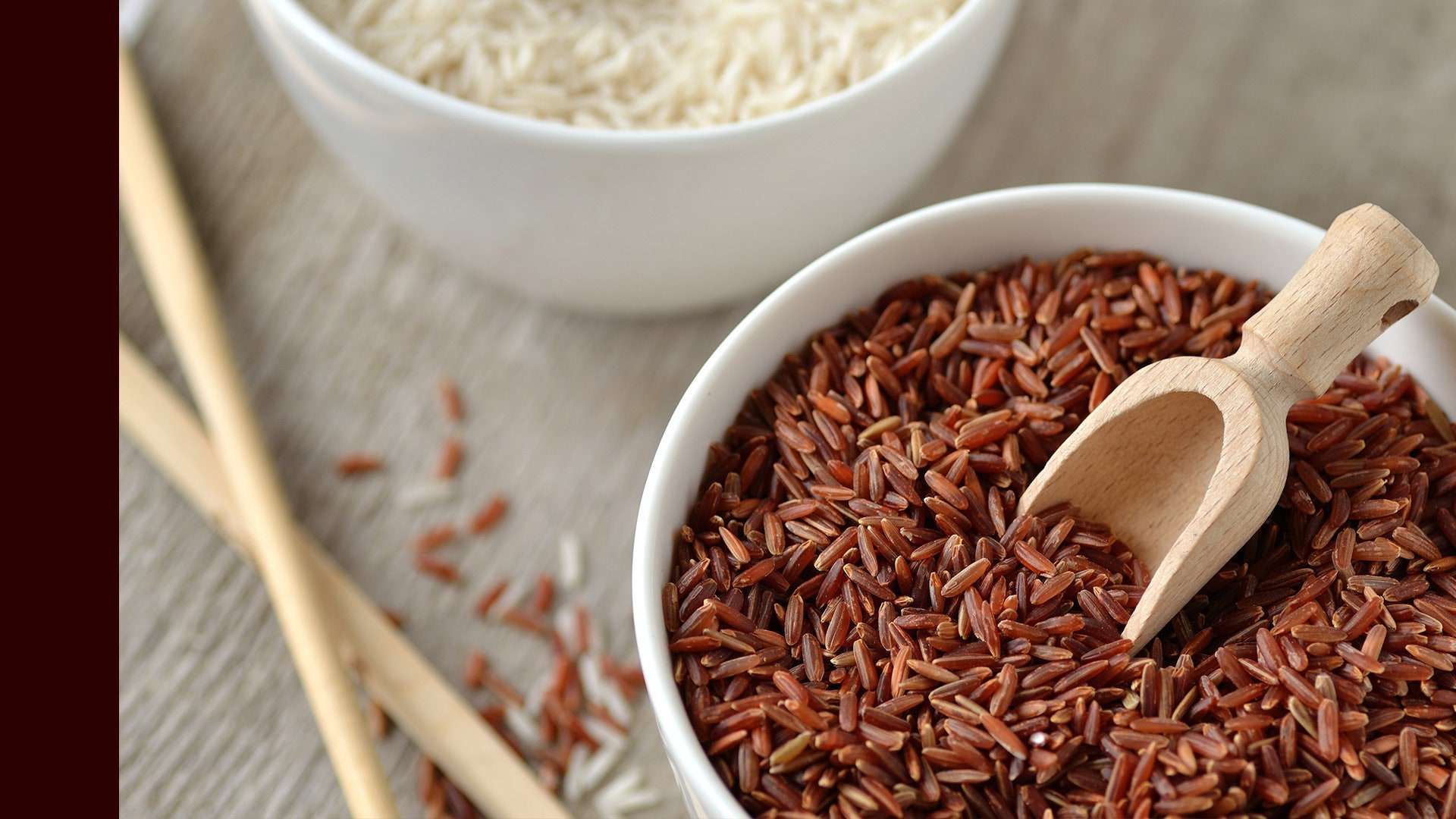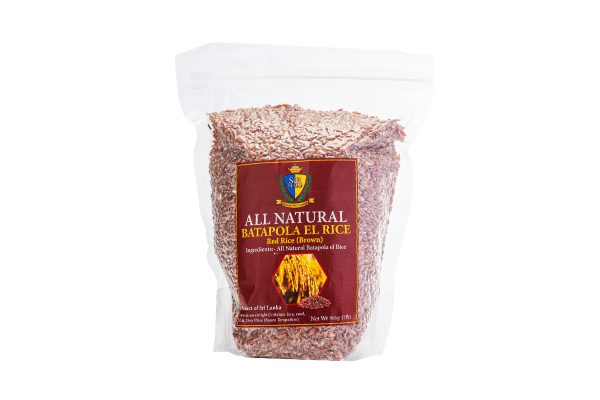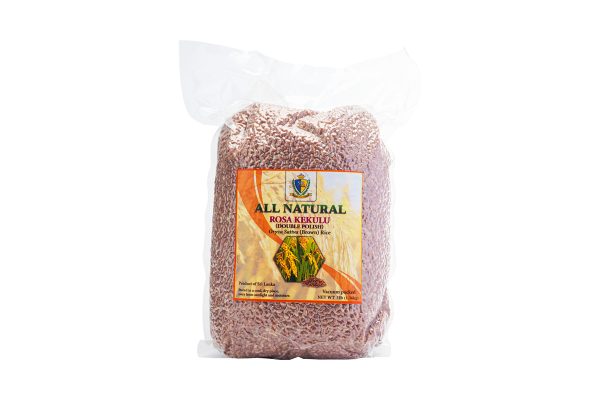you must know the benefits of red rice for your health
 Introduction
Introduction
At its core, red rice stands as a testament to the beauty of natural diversity. Hailing from various corners of the globe, red rice varieties offer not only a feast for the eyes but also a rich tapestry of flavors and textures. From the aromatic Jasmine Red Rice to the culturally significant Bhutanese Red Rice and the cherished Himalayan Red Rice, each variety has a story to tell.
B. Historical Significance
To truly appreciate red rice, we must travel back in time and grasp its historical significance. Woven into the fabric of ancient cultures, red rice emerges as more than a mere sustenance; it symbolizes traditions, rituals, and the resilience of communities. Understanding the historical context sets the stage for unraveling the health benefits that have been revered across generations.
Nutritional Profile
Red rice is not just a visually striking addition to your plate; it’s packed with a robust nutritional profile that contributes significantly to overall health and well-being.
Rich in Antioxidants
Antioxidants are compounds that play a crucial role in neutralizing free radicals within the body. Free radicals are unstable molecules that can damage cells and contribute to aging and various diseases. Red rice, particularly due to its vibrant color, is rich in antioxidants, including flavonoids and anthocyanins. These compounds not only give red rice its distinctive hue but also offer potent protection against oxidative stress.
Essential Vitamins and Minerals
Red rice serves as a reliable source of essential vitamins and minerals vital for maintaining bodily functions and promoting good health. It is particularly rich in B vitamins, such as B1 (thiamine), B2 (riboflavin), B3 (niacin), and B6. These vitamins play crucial roles in energy metabolism, brain function, and the maintenance of healthy skin.
Additionally, red rice provides essential minerals like iron, magnesium, and zinc. Iron is essential for oxygen transport in the blood, magnesium contributes to muscle and nerve function, and zinc supports immune function and wound healing. Including red rice in your diet ensures a diverse array of these micronutrients, promoting overall health and vitality.
Dietary Fiber Content
Dietary fiber is a key component of red rice that holds significant benefits for digestive health. Fiber is classified into two types: soluble and insoluble. Red rice contains both types of fiber, contributing to digestive regularity and promoting a healthy gut.
- Soluble Fiber: This type of fiber dissolves in water, forming a gel-like substance. It helps lower cholesterol levels and stabilizes blood sugar levels, making it beneficial for cardiovascular health and diabetes management.
- Insoluble Fiber: This type of fiber adds bulk to the stool, aiding in the prevention of constipation and promoting regular bowel movements. It also supports a healthy digestive tract by preventing the development of digestive disorders.
Incorporating red rice into your diet ensures a substantial intake of dietary fiber, contributing to overall digestive wellness and supporting various aspects of your health.
All Natural Batapola El Red Rice (Brown) 2.00 Lb (Sri Lanka Traditional Rice)

Red Rice Varieties
Jasmine Red Rice
Jasmine Red Rice, a variety known for its aromatic fragrance and distinct nutty flavor, adds a touch of elegance to any dish. Grown primarily in Thailand, this red rice variety boasts a unique combination of health benefits and sensory delights. Its pleasant scent, reminiscent of jasmine flowers, elevates the culinary experience, making it a popular choice for both traditional and contemporary cuisines.
Bhutanese Red Rice
Hailing from the picturesque landscapes of Bhutan, Bhutanese Red Rice is more than just a staple; it’s a cultural symbol deeply rooted in the traditions of the region. With a slightly chewy texture and a subtle nutty taste, this variety stands out for its vibrant red husk. Bhutanese Red Rice has become a source of national pride, celebrated not only for its unique flavor profile but also for its contribution to overall health. Rich in nutrients and antioxidants, Bhutanese Red Rice offers a wholesome addition to the culinary tapestry, bringing a taste of the Himalayas to your plate.
Himalayan Red Rice
Nestled in the foothills of the mighty Himalayas, Himalayan Red Rice is a testament to the resilience of ancient grains. Known for its robust flavor and hearty texture, this variety thrives in the high-altitude regions, absorbing the essence of its pristine surroundings. Himalayan Red Rice not only captures the spirit of the mountains but also encapsulates a wealth of nutritional benefits. As you explore red rice varieties, embark on a journey to the Himalayan slopes through the unique experience offered by this exceptional grain, a true embodiment of the Himalayan terroir.
Cardiovascular Health: Nurturing Your Heart with Red Rice
Cardiovascular health is a paramount aspect of overall well-being, and red rice emerges as a potent ally in maintaining a healthy heart. In this section, we will explore the intricate ways in which red rice positively impacts cardiovascular health, regulating key factors and mitigating the risk of heart diseases.
Impact on Cholesterol Levels
Red rice plays a pivotal role in managing cholesterol levels, particularly in reducing LDL cholesterol, commonly known as the “bad” cholesterol. The presence of compounds such as phytosterols and fiber in red rice contributes to the regulation of cholesterol absorption and synthesis in the body. By moderating cholesterol levels, red rice actively promotes a cardiovascular environment conducive to heart health.
Regulation of Blood Pressure
Hypertension, or high blood pressure, is a significant risk factor for cardiovascular diseases. Red rice contains minerals like magnesium and potassium, known for their blood pressure-regulating properties. These minerals aid in vasodilation, relaxing blood vessels and facilitating smoother blood flow. Regular consumption of red rice contributes to the maintenance of optimal blood pressure levels, reducing the strain on the heart and decreasing the risk of hypertension-related complications.
Reducing the Risk of Heart Diseases
The cumulative effect of red rice’s impact on cholesterol levels and blood pressure regulation significantly reduces the overall risk of heart diseases. Studies have indicated that incorporating red rice into the diet can lead to improvements in lipid profiles and a decrease in inflammatory markers associated with cardiovascular issues. By addressing multiple factors, red rice acts as a holistic approach to cardiovascular health, promoting a robust and resilient heart.
Diabetes Management
Effect on Blood Sugar Levels
Red rice emerges as a promising ally in the realm of diabetes management due to its unique impact on blood sugar levels. The complex carbohydrates present in red rice have a gradual and steady effect on blood glucose, preventing sudden spikes and crashes. Unlike refined grains, red rice has a lower glycemic index, making it an ideal choice for individuals with diabetes.
Studies have shown that the consumption of red rice leads to a slower rise in blood sugar levels after meals, offering a more controlled response. This can be particularly beneficial for individuals with diabetes who need to monitor and regulate their blood glucose levels consistently.
Dietary Recommendations for Diabetics
Incorporating red rice into the diet of individuals with diabetes comes with specific dietary recommendations to optimize its benefits:
- Portion Control: While red rice is a healthy choice, moderation is key. Controlling portion sizes helps manage caloric intake and contributes to better blood sugar control.
- Balanced Meals: Combining red rice with a variety of vegetables, lean proteins, and healthy fats creates balanced meals that support overall health and provide sustained energy.
- Timing Matters: Distributing red rice consumption throughout the day helps maintain steady blood sugar levels. Including it in well-balanced meals and snacks prevents sudden spikes.
- Consultation with a Healthcare Professional: Individuals with diabetes should consult with their healthcare providers or nutritionists to tailor red rice consumption to their specific dietary needs and health conditions.
- Whole Grain Emphasis: Choosing whole grain red rice over refined varieties ensures a higher fiber content, further aiding in blood sugar control and promoting digestive health.
By incorporating red rice into a well-managed and balanced diabetic diet, individuals can enjoy a wholesome grain that not only satisfies their nutritional needs but also supports their efforts in keeping blood sugar levels in check. It is essential for individuals with diabetes to work closely with healthcare professionals to personalize their dietary plans and maximize the benefits of red rice within the context of their overall health management.
Weight Management with Red Rice
In the quest for sustainable and effective weight management, red rice emerges as a versatile ally, offering a host of nutritional benefits that go beyond its delightful flavor and appealing color. Let’s delve deeper into how red rice plays a pivotal role in supporting weight loss and promoting overall well-being.
1. Role in Weight Loss
Red rice’s contribution to weight loss lies in its composition. This whole grain is rich in dietary fiber, particularly the insoluble type. Fiber adds bulk to your diet, promoting a feeling of fullness or satiety. As a result, you’re less likely to overeat, helping to control calorie intake—a fundamental aspect of any successful weight loss journey.
2. Satiety and Reducing Overeating
One of the challenges in managing weight is resisting the temptation to overeat. Red rice, with its high fiber content, takes longer to chew and digest, creating a lasting sense of fullness. This prolonged feeling of satiety reduces the likelihood of snacking between meals and helps curb overeating during regular mealtimes. By fostering better control over portion sizes, red rice becomes an effective tool in weight management strategies.
3. Balanced Nutrient Profile
Red rice isn’t just about fiber; it also offers a balanced nutrient profile crucial for a healthy diet. The presence of essential vitamins, minerals, and antioxidants ensures that your body receives the necessary nutrients during weight loss. This balance is essential to prevent nutrient deficiencies that might accompany restrictive diets.
4. Low in Calories
Compared to refined grains, red rice tends to be less processed, retaining more of its natural nutritional content. Additionally, it is relatively low in calories, making it a smart choice for those aiming to reduce calorie intake without sacrificing essential nutrients. Incorporating red rice into your meals allows for satisfying, nutrient-dense options that support weight management goals.
5. Versatility in Meal Planning
Red rice’s versatility extends beyond its nutritional benefits. Its nutty flavor and firm texture make it an excellent base for a variety of dishes. From salads to stir-fries and pilafs, red rice can be incorporated into diverse, flavorful meals that cater to individual tastes. This versatility ensures that weight management doesn’t translate to monotony in your culinary choices.

All Natural Rosa Kekulu – Oryza Sativa (Brown) Rice (3 Lb) (Sri Lanka Traditional Rice)
Immune System Boost
In the realm of health and wellness, maintaining a robust immune system is crucial for safeguarding the body against infections and illnesses. Red rice, with its rich nutritional profile, emerges as a potent ally in fortifying the immune system.
Strengthening Immune Responses
Red rice contains essential nutrients that play a pivotal role in strengthening the body’s immune responses. Chief among these nutrients are vitamins such as vitamin C, vitamin A, and various B vitamins. Vitamin C is renowned for its antioxidant properties, neutralizing free radicals and supporting the immune system in its defense against pathogens. Vitamin A is vital for the proper functioning of immune cells, ensuring an effective response to invading microorganisms. Additionally, B vitamins contribute to the production and maturation of immune cells, enhancing the body’s ability to combat infections.
Reducing Susceptibility to Infections
Regular consumption of red rice has been associated with a reduced susceptibility to infections. The combination of antioxidants and immune-boosting vitamins creates an environment in which the body is better equipped to fend off viruses and bacteria. Studies have suggested that incorporating red rice into one’s diet can lead to a lower incidence of common colds, flu, and other respiratory infections.
Potential Side Effects and Considerations
1. Allergies and Sensitivities
Red rice, while generally well-tolerated, may trigger allergic reactions in some individuals. Common symptoms include itching, swelling, or difficulty breathing. It is essential to be aware of personal allergies and consult with a healthcare professional if any adverse reactions occur.
2. Moderation in Consumption
As with any food, moderation is key. Excessive consumption of red rice may lead to an imbalance in nutrient intake, impacting overall dietary diversity. It’s crucial to integrate red rice into a well-rounded diet rather than relying solely on it as a primary source of nutrition.
3. Oxalate Content
Red rice contains oxalates, naturally occurring compounds that can contribute to the formation of kidney stones in susceptible individuals. Those with a history of kidney stones may need to monitor their oxalate intake and consider consulting a healthcare professional for personalized advice.
4. Phytic Acid
Phytic acid, found in red rice, can bind to minerals, reducing their absorption. While this is generally not a concern for those with a balanced diet, individuals relying heavily on red rice should be mindful of potential mineral deficiencies. Cooking methods like soaking and fermenting can help mitigate phytic acid content.
5. Interactions with Medications
Individuals taking medications, especially those affecting blood sugar or blood pressure, should consult their healthcare provider before significantly altering their red rice consumption. Red rice’s impact on these parameters may require adjustments to medication dosage for optimal health management.
Conclusion
Frequently Asked Questions (FAQs)
Q1: What is red rice, and how is it different from other types of rice?
Ans: Red rice is a type of unpolished rice with a reddish-brown color, primarily due to its outer layer of bran. Unlike white rice, it retains more nutrients, making it a healthier option.
Ans: Red rice is rich in antioxidants, fiber, essential minerals (iron, zinc, and magnesium), and vitamins (B6, B3, and K). These nutrients contribute to better overall health and can help prevent various diseases.
Q3: How does red rice contribute to heart health?
Ans: Red rice contains high levels of fiber and antioxidants, which are linked to lower cholesterol levels and reduced risk of heart disease. The presence of anthocyanins in red rice may also have positive effects on cardiovascular health.
Q7: Can red rice be beneficial for diabetes management?Ans: Red rice has a lower glycemic index compared to white rice, which means it has a milder impact on blood sugar levels. Including red rice in a balanced diet may be beneficial for individuals managing diabetes.
